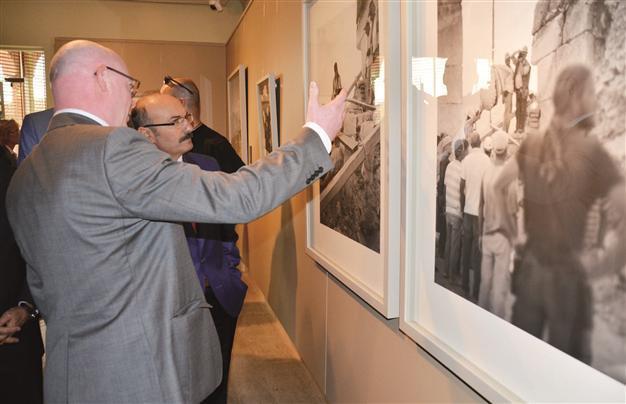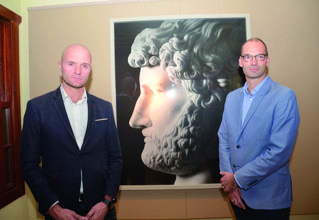Life of Sagalassos people discussed at conference
ANTALYA – Doğan News Agency
 The Suna & İnan Kıraç Research Institute on Mediterranean Civilizations launched the new season of its traditional cultural and artistic activities on Nov. 8, with an event titled “Sagalassos Comes to Antalya!”
The Suna & İnan Kıraç Research Institute on Mediterranean Civilizations launched the new season of its traditional cultural and artistic activities on Nov. 8, with an event titled “Sagalassos Comes to Antalya!” As part of the event, a conference titled “Finding the Ordinary People of Ancient Sagalassos: How Did They Live, Work and Die?” was held, with attendees including Leuven University Professor Jeroen Poblome, who is the head of the Sagalassos excavations, Burdur Governor Hasan Kürklü, Burdur Museum Director Hacı Ali Ekinci, Belgian Ambassador to Ankara Marj Trentese, and many invited art lovers.
Speaking about the excavations, Poblome denied claims that the people of Sagalassos, an ancient city in the southern province of Burdur’s Ağlasun district, had genetic ties with the people of today’s Ağlasun. He said Sagalassos locals ate wheat paste and food of animal origin rather than bread, adding that they had found the remains of food consisting of animal feet in pots in a building constructed in 200 A.D. for collective eating.
Poblome said work in Sagalassos in 2013 and 2014 had unearthed the remains of ceramic ateliers.
 “Recent works showed that the ceramic ateliers were divided into two sections. We found tools for ceramic productions. Thanks to these tools, we can learn how they organized the business of ceramic production. The 3D photos also showed us the fingerprints of people who worked here. We received help from the Belgian police and found out that five to seven people worked in these ateliers,” he said.
“Recent works showed that the ceramic ateliers were divided into two sections. We found tools for ceramic productions. Thanks to these tools, we can learn how they organized the business of ceramic production. The 3D photos also showed us the fingerprints of people who worked here. We received help from the Belgian police and found out that five to seven people worked in these ateliers,” he said.Speaking about the graves in the ancient site, Poblome said the graves of rich people were separate from the graves of poor people.
“The graves of elite people were in the south, close to the main road, while the graves of poor people were in the north. This shows us social competition. We also found mass graves in Sagalassos, 18 or 19 of which were opened. These people were buried together but did not have blood ties,” he added.
The conference was followed by the opening of an exhibition, “in(site) Sagalassos: From Where We Stand,” prepared by photographers Bruno Vandermeulen and Danny Veys.
The exhibition will be open to visitors at the Institute’s Gallery until Dec. 8, and is comprised of 40 photographs reflecting the transformational stages of Sagalassos and the relationship between photography and archaeology, accompanied by details recorded at the excavation site.
Ancient Sagalassos
The ancient city of Sagalassos was founded on the slopes of the Taurus mountain range and was the metropolis of the Roman province of Pisidia. It is seven kilometers away from the Ağlasun district, and excavations have been continuing there since 1990, led by Leuven University in Belgium. The city is on the UNESCO Tentative List of World Heritage.
















